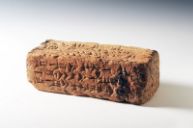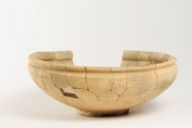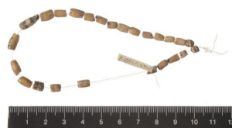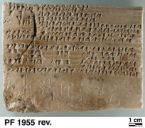Clay, a material for a variety of purposes
This is clay. The majority of the known clay tablets are written in Cuneiform, but also clay tablets from the Minoan and Mycenaean periods survived, such as these Mycenaean clay tablet with Linear B. Moreover, all Linear B texts that have been transmitted survived on clay. This is not surprising given the permanence of this material, in contrast to many others. Clay is a natural soil material containing clay minerals which are formed by the weathering of rocks. Those weathering products are carried by rivers and winds all around the world. The omnipresence of clay and its plasticity when it is mixed with water makes this material suited for different purposes, such as pottery, building bricks, and as a writing medium. Consequently, some of the first writing systems are delivered to us on clay.
Wet clay can be inscribed with a sharp object, such as a reed stylus. After inscribing, these clay tablets were either dried in the sun, which made it possible to recycle them by wetting again, or fired to make them hard-wearing. It is hard to tell, however, whether a clay tablet is fired purposely by its maker, accidently baked by destructive fires, or fired –without documenting it– by museums in the 20th century to preserve the tablet. Regarding the Linear B tablets, it is likely that most of the 5000 surviving Linear B clay tablets were baked by destructive fires during external attacks, and that some were only sundried and therefore very brittle. Since the survival of clay tablets also depends on the type of soil and the amount of moisture, most of the written clay tablets have turned into dust and remain unknown to us.





